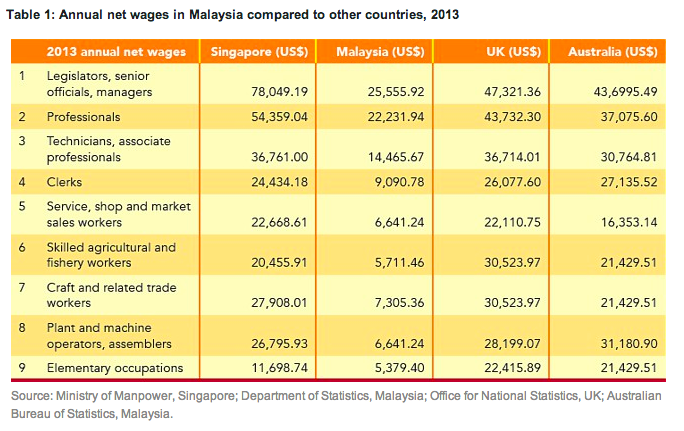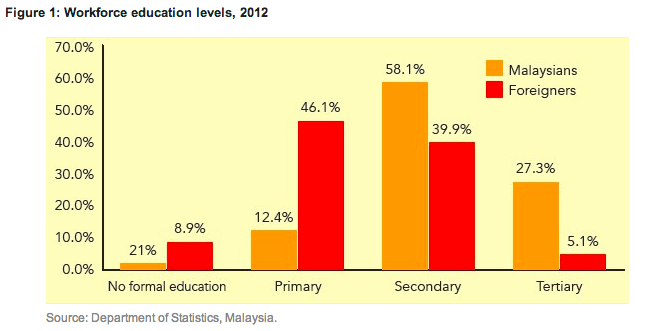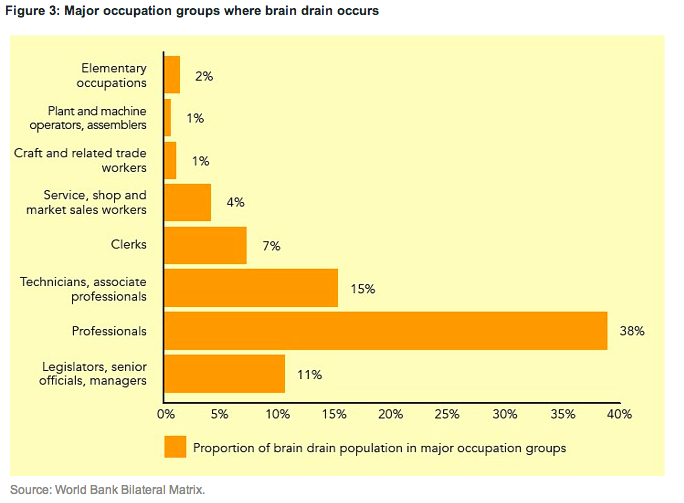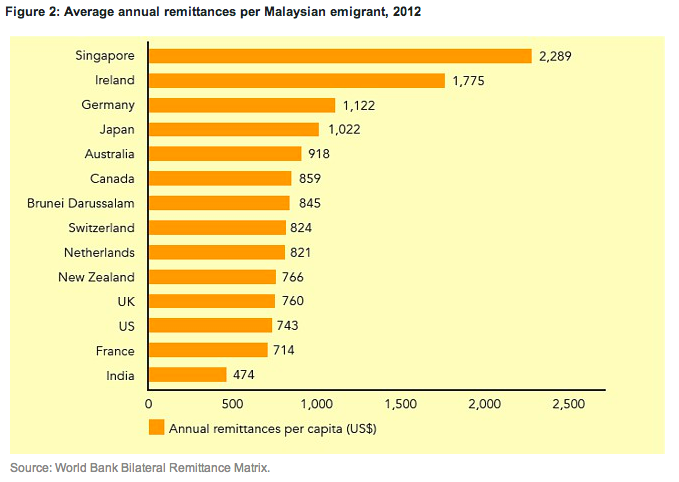5 Graphs To Help You Understand Malaysia's Brain Drain Problem
The brain drain phenomenon in Malaysia ensues. Here are some hard hitting facts to chew on.
1. Malaysia's annual net wages is considerably low compared to Singapore, UK and Australia
Compared to average wages in Singapore, the UK and Australia, Malaysia’s wages are lagging far behind. A person of managerial rank in Malaysia, for example, earns only one-third of the wages in Singapore. Malaysia is still very much a country with low labour costs. Elementary occupations (e.g. cleaners, domestic helpers and agriculture labourers) pay only US$5,380 a year – half the wage in Singapore and a quarter of those in OECD countries.
Although low wages is one of the main factors of high-skilled emigration, it is not always a disadvantage; multinational companies, especially those in the E&E sector, set up factories in Malaysia because of the availability of highly educated workers at relatively low wages.
Note: All wages have been adjusted for income tax and purchasing power. Categories are based on the International Labour Organization’s standard occupation code.
2. Majority of Malaysians in the country hold medium to low-skilled jobs (sales and service, clerical work). High-skilled foreigners were unable to compensate for the outflow of human capital.
While local workers are rather evenly distributed throughout major occupation groups, the same cannot be said for immigrants. The top four tiers of major occupations in Table 1 are considered to be high-skilled. However, only 4.8% or 70,400 of foreigners occupy these jobs. 57.8% of immigrants work in factory and elementary occupations, compared to 19.4% of locals. The majority of Malaysians work in medium- to low-skilled jobs (e.g. sales and service, clerical work, professionals).
In the past, low-skilled labourers have helped Malaysia develop its construction, manufacturing and agricultural sectors throughout the years, but high-skilled workers are still required to bridge the technology gap between Malaysia and its competitors. In 2012, a total of 295,000 high-skilled, tertiary-level educated Malaysians left for foreign countries. Unfortunately, the number of high-skilled foreigners was unable to compensate for the outflow of human capital. Little has changed since then, and Malaysia is still facing a high net outflow of talent.
3. The growth of high-skilled jobs has not tallied with the number of people with higher education. In other words, too many graduates, too few high-skilled jobs.
Migrants in Malaysia are typically low educated. 46.1% have primary education, whereas only 40% have secondary education. Very few are tertiary educated – a mere five per cent. In contrast, the majority of locals have secondary education or higher. Nearly a third are tertiary educated, whereas only 14% have up to primary education or no formal education at all.
According to the World Bank (2011), share of citizens with tertiary education level rose significantly from 16% in 2001 to 22% in 2008. However, share of citizens with higher skill occupations only increased slightly from 18.4% to 19.9% during the same period. This shows that the growth of high-skilled jobs has not matched the growth of tertiary education, and that the growth of domestic employment demand is insufficient to absorb people with higher education.
4. 64% Malaysians overseas, the 'brain drain population', work in fields that require high skills and qualifications while 15% are overqualified for their jobs
Sixty-four per cent of Malaysia’s brain drain population is concentrated in the top three major occupation groups which require high skills and qualifications. The majority of high-skill emigrants work as professionals (e.g. lawyers, accountants and pharmacists), whereas the second largest group consists of technicians and associate professionals (e.g. nurses, trade brokers and estate agents).
Approximately 15% of high-skilled emigrants from Malaysia are overqualified for their job positions. Eleven per cent of them work in middle skill occupations such as clerks, service, shop, market sales workers; whilst four per cent of them are involved in low-skilled jobs such as elementary occupations, plant, machine operators, assemblers, and craft and related trade workers. The remaining 11% of the high-skilled emigrants not shown here are unemployed.
Note: The figures provided are based on the high-skill Malaysian emigrant population residing in OECD countries.
5. Malaysians working in Singapore send more money home annually compared to their counterparts in other countries
Malaysians living in Singapore remit on average US$2,289 per person annually – almost thrice what their counterparts in OECD countries usually remit. Migrants in India remit the least, with each Malaysian sending home only US$474 per year. Remittances per capita from Singapore are much higher possibly due to Malaysians migrating for work reasons to support their families, who rely more heavily on remittances as an important source of income thus creating a need for emigrants to remit more in absolute terms.
These data do not differentiate between high-skilled and low-skilled Malaysian emigrants, though it is likely that there is a difference in remitting patterns for both groups.




